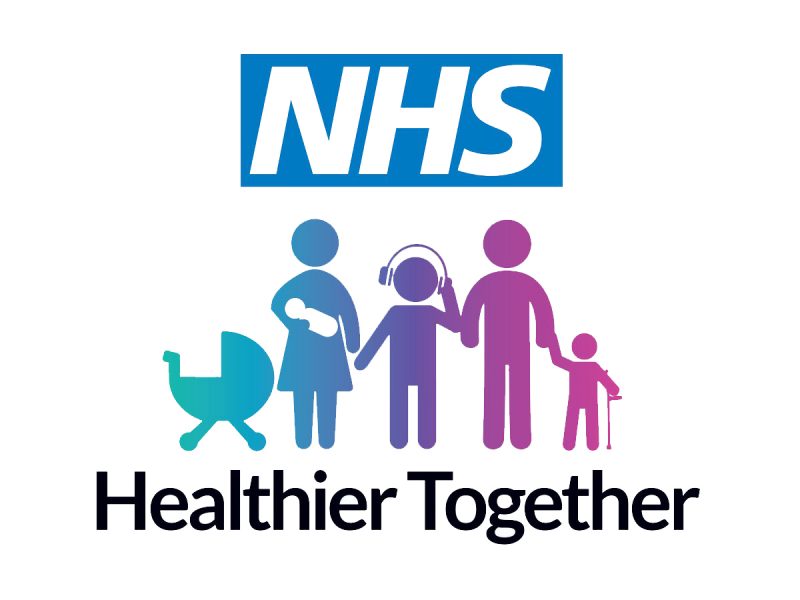
What is viral induced wheeze?
A wheeze or whistling sound that is caused by a viral infection (a cough or a cold). The wheeze may return each time your child has a cold. Usually the child is well in-between the viral infections but the wheeze can last for some weeks after the infection.
Children under the age of 3 years are more likely to be affected as their air passages are small.
Treatment
Over the next few days, your child will need to be regularly given a blue (salbutamol) reliever inhaler.
Dose of blue (salbutamol) reliever inhaler via spacer
| Today | 10 puffs, 4 hourly for first 24 hours (including through the night) |
| Then | 5 puffs, 4 hourly for 24 hours |
| Then | 2 puffs, 4 hourly until symptoms improve |
After which your child should be back to normal and you should be able to stop the blue inhaler.
In the event that your child has been started on steroid tablets, these should be continued once daily (usual treatment course is 3 days).
If your child becomes increasingly breathless despite following the plan above, you should follow the instructions outlined below.
Looking after your child during episodes of viral induced wheeze
At the start of cold symptoms (such as runny nose), begin your child on blue (salbutamol) reliever inhaler 10 puffs 4 hourly (including through the night).
If you or your child
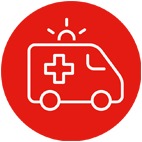
- To breathless to talk or eat or drink
- Has blue lips
- Having symptoms of cough or wheeze or breathlessness which are getting worse despite treatment
- Confused and drowsy
URGENT HELP – RING 999
Give 10 puffs of blue (salbutamol) reliever inhaler every 10 minutes until ambulance arrives
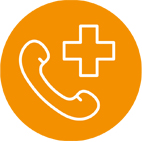
If you or your child
- Wheezing and breathless and the reliever treatment is not lasting
4 hours - Having day-time and night-time symptoms of cough or wheeze
- Too breathless to run and play
You need to contact a doctor or nurse TODAY.
Give 10 puffs blue (salbutamol) reliever inhaler. Please ring PDU 01642 854896.
You have open access for 72 hours
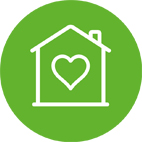
If you or your child
- If your child’s breathing is not laboured or fast and he or she is able to continue their normal day to day activities
Self care
Start blue (salbutamol) reliever inhaler 10 puffs 4 hourly for 1 day, then 5 puffs 4 hourly for 1 day, then 2 puffs 4 hourly (including through the night) until symptoms improve
Standard technique for use of inhaler and spacer
Choose appropriate sized spacer with mask (or mouthpiece if child is over 3 years with good technique and is not significantly short of breath)
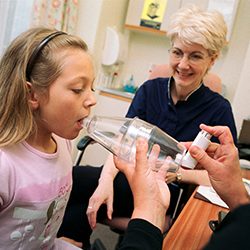
Spacer without a mask
- Shake inhaler
- Place inhaler in end of the spacer
- Place mouth piece of spacer into the mouth
- Press inhaler once
- Breathe slowly five times
- Repeat from step one for each dose prescribed
Spacer with mask
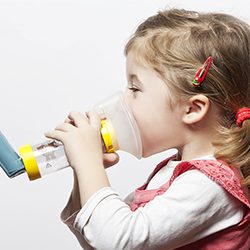
- Join mask to spacer
- Shake inhaler
- Place inhaler in the end of the spacer
- Tip spacer up until valve opens
- Place over nose and mouth
- Press inhaler once
- Count to 20-30 seconds
- Repeat for each dose prescribed
Plastic spacers should be washed before 1st use and every month as per manufacturer’s guidelines
Does this mean my child has asthma?
No, not necessarily. This is a different condition from asthma, although a few children do go on to develop asthma. Children with asthma:
Are often wheezy, even when they do not have a cough or cold Usually have a family history of asthma and allergy
Are generally more breathless than their friends when they run around or become wheezy on exercise. Often have a regular night time cough
Follow up
If your child has been discharged from hospital, you should arrange for them to be reviewed by your GP if they continue to have lots of problems with wheeze once they have recovered from their cold.
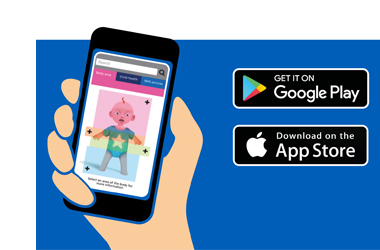
Get the free NHS app
You can download the ‘NHS Healthy child App’ for guidance on looking after your child’s health. Search ‘NHS child health’ in the App store or google play.
Patient experience
South Tees Hospitals NHS Foundation Trust would like your feedback. If you wish to share your experience about your care and treatment or on behalf of a patient, please contact The Patient Experience Department who will advise you on how best to do this.
This service is based at The James Cook University Hospital but also covers the Friarage Hospital in Northallerton, our community hospitals and community health services.
To ensure we meet your communication needs please inform the Patient Experience Department of any special requirements, for example; braille or large print.
T: 01642 835964
E: stees.patient.experience@nhs.net